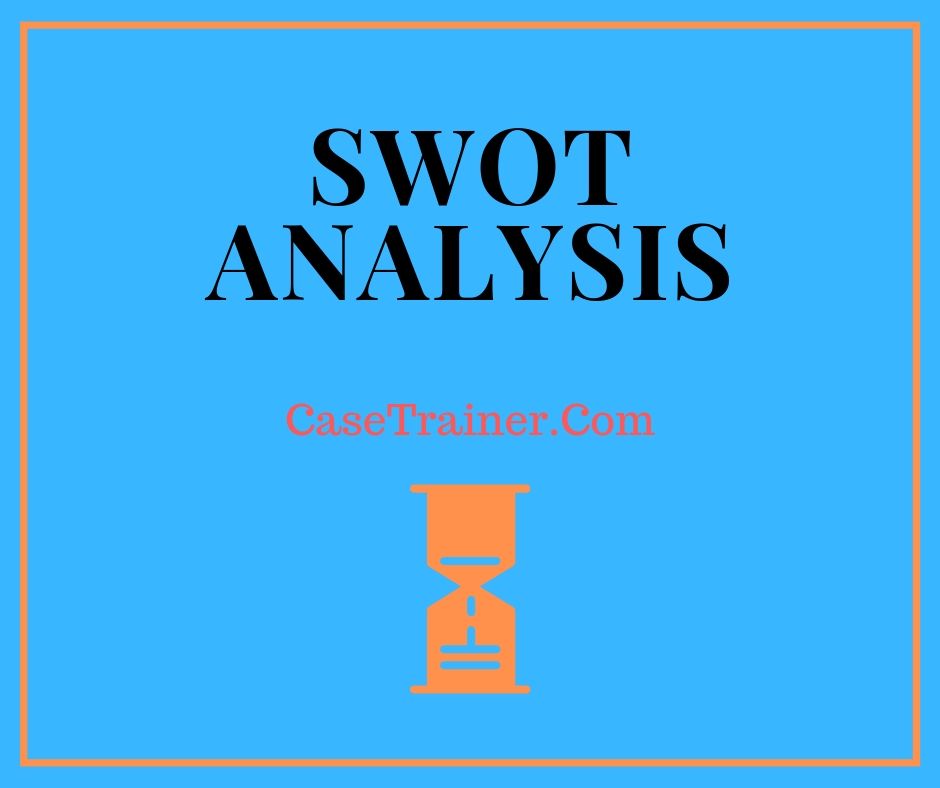Annotated Bibliography 3 Case Study Solution and Analysis
Intro
Annotated Bibliography 3 Case Study Solution is the largest publishing business with a highest market share in the China's book retail market. CMP supplies a variety of services including; gathering details, processing information and communication services. Significant company sectors of the business consist of; books, regulars, consultancy and circulation. The company has a large item portfolio and its major items include books, periodicals, online media, exhibitions, research study reports and so on. Annotated Bibliography 3 Case Study Analysis has ended up being a specialized information supplier and a large extensive Science and Innovation publishing company through the combination of print media, audio-visual media and the network media.
Crucial Concerns
CMP has actually spent its 60 years journey smoothly, being an effective publishing house, nevertheless, the altering macro market patterns and forces bring specific obstacles to the publishing industry in basic and Annotated Bibliography 3 Case Study Help in particular. These factors consist of;
• Entryway of the brand-new publishing companies in the industry.
• Decreasing growth of the publishing market.
• Market saturation.
• Introduction of digital publishing strategies
• Enhancement of science and innovation.

The improvement of the macro markets have raised numerous concerns to the management at CPM that what could be the future of CMP in this circumstance? Do the long important experience, technical resources and the abilities of the company could be made use of to pursue the future advancement unceasingly? How could the company sustain its long term competitive position in future?
Situational Analysis
Internal Analysis
SWOT Analysis
Strengths
Annotated Bibliography 3 Case Study Solution has particular strengths that can be used to lower the risks, overcome the weak point and avail the chances. Strengths of CMP are provided as follows;
• The long term experience of Annotated Bibliography 3 Case Study Solution in the publishing market i.e. 60 years permits the business to offer high quality products at a lower cost using its prior experiences.
• The technical resources and capabilities produced by its effective journey offer a competitive advantage to CMP.
• Huge item portfolioof CMP assists it to diversify its danger and offer high worth to its customers.
• Strong financial position enables the business to think about several development chances without any worry of raising fund externally.
Weaknesses
In addition to the strengths, the business has specific weaknesses which might increase constraints for the business in implementing its development program. The weaknesses of Annotated Bibliography 3 Case Study Solution are provided as follows;
• Despite of being a science and innovation publishing company, the company still has standard ways ofpublishing which are not compatible with the growing technological shift.
• CMP extremely relies over the Chinese markets for its development. It should propose particular growth strategies to prevent its reliance over the Chinese markets to attain long term development.

Opportunities
Although, the growth of the publishing industry is declining given that 2008, impacting Annotated Bibliography 3 Case Study Solution as well, however the development might be revived by availing particular opportunities provided in the market. The market opportunities for CMP consist of;
• The company could also present Digital Publishing by utilizing its long term technical experience and a strong customer acknowledgment in the market.
• CMP could consider a development program through the growth towards foreign markets in order to minimize its dependence over Chinese markets by using its huge financial resources.
Dangers
The altering macro patterns in the market and increasing competitors in the publishing industry has actually posed specific threats to Annotated Bibliography 3 Case Study Solution consisting of;( Gurel, 2017).
• Introduction of digital publishing i.e. virtual libraries could lead to decreasing market share of Annotated Bibliography 3 Case Study Analysis due to the consumer shift towards virtual libraries.
• The presence of large number of competitors in the publishing market increase the threat for CMP to lose its competitive position in the market, as rivals can acquire a strong consumer base by using particular methods like aggressive promo, quality items, etc.
• Entrance of brand-new publishing firms in the industry in addition to existence of high competitors increases the risk of losing the client base.
Financial Analysis.

The company has a rather competitive financial efficiency. Due to lack of data, the financial ratios of CMP could not be calculated. However, the overall monetary efficiency of the company could be evaluated by utilizing the graphs given in the case Appendices. It might be evaluated from the Appendix III that the yearly total profits of CMP throughout the period 2000-2012 are growing at a high development rate, showing that the annual demand of the items of Annotated Bibliography 3 Case Study Analysis is growing and the company is quite effective in attracting a large number of customers at a potential rate.
In addition to it, the second graph which reveals the yearly growth in the Annotated Bibliography 3 Case Study Analysis total assets, reveals that the company is quite efficient in adding worth to its properties through its profits. The development in assets shows that the total value of the company is also increasing with increasing the total profits. (Unknown, 2013).
Another financial analysis of the business using the provided information could be the analysis relating to the circulation of overall profits of the company. Major part of the earnings of CMP comes from the sales of its released books i.e. 64% as displayed in the Case Appendix V. The business might move towards other service sectors with a potential development to attain its future advancement objective.
PESTEL Analysis
PESTEL analysis might be performed to find out the various external forces affecting the efficiency of the company and the recent trends in the external environment of the business. A short PESTEL analysis of the company is provided as follows; (Alanzi, 2018).
Political.
As the publishing sector could have a considerable influence on the mindset of individuals about the communist ideology of the government, for that reason, the publishing sector is highly monitored and assisted by the Publicity Department of the Communist Celebration of China. For that reason, it might be stated that the overall political forces affecting Annotated Bibliography 3 Case Study Analysis company are high. The federal government policies concerning the publishing sector are likewise increasing with the passage of time.
Economical.
Economic forces affecting the publishing sector in general and the CMP in particular includesthe prices of paper, the earnings level of customers, the inflation rate, and the total GDP growth of the country. All these forces combine impact the demand for the publishing market.
Social and Demographical.
Social and demographical forces consist of the population development, the customer's choices towards checking out helpful materials etc. China has the highest population in the world with a high population development, showing the increasing variety of customers of the Annotated Bibliography 3 Case Study Help. However, the customer choices are shifting towards digital publishing rather than the conventional was of publishing. In this regard, CMP ought to concentrate on digital publishing to meet the altering consumer preferences.
Technological.
Technological forces impacting the CMP consist of the technological improvement in the reading techniques etc. Improvement of science and technology in addition to the rise of digital publishing might minimize the need for the CMP products, if certain actions would not be taken soon.
Environmental.

Environmental forces impacting Annotated Bibliography 3 Case Study Help includes the concerns of environmental communities over the use of paper in publishing books. The paper utilized in the books while publishing is needed to be disposable and the ink utilized while publishing needs to not be harmful for the environment.
Legal.
Legal regulations for the publishing sector at whole are high. The legal regulations relating to the publishing sector is managed by the General Administration of Press and Publication. Publishing Ordinance 1997 needs the publishers to be authorized first by the Federal government to be gone into in the publishing market. The ordinance forbids direct involvement of foreign entities and individuals in the publishing sector.
Industry Analysis (Porter's Five Forces Design).
Porter's 5 Forces Model could be used to evaluate the beauty of the publishing market China. A quick analysis of the Porter's Five Forces is provided as follows;.
Risk of New Entrants.
Hazards of new entrants in the Chinese Publishing Industry is moderate. The prospective growth in the industry tends to attract brand-new entrants to the publishing industry. The existence of intense competitors and the requirement of substantial capital tends to demotivate brand-new entrants to go into in the market.
Danger of Replacement.
Danger of Substitution is high for the Chinese Publishing Market. The replacement products for the released files is the documents presented in the digital libraries on specific websites. The changing customer choices towards digital knowing increase the danger of alternative for the market.
Competitive Rivalry.
Competitive competition in the publishing industry is high. The presence of a great deal of consumers in the Chinese Publishing Market like CIP, PTP etc. tends to produce high competitive competition for CMP. Together with it, new entrants are also entering into the marketplace increasing the competition for CMP.
Bargaining Power of Provider.
The major suppliers of the Annotated Bibliography 3 Case Study Help include the providers of the paper for releasing documents. As CMP is the biggest publisher in the Chinese Publishing Market, for that reason the total bargaining power of supplier for CMP is low.
Bargaining Power of Buyer.
Haggling power of buyer in the publishing industry is high. Due to the presence of a large number of publishers in the Chinese market and the marketplace saturation, the buyers needs high quality documents at competitive rates.
Rivals Analysis.
CMP operates in an extremely competitive market with the presence of a great deal of competitors. Nevertheless, the business has a competitive position in the market with the highest market share in the Chinese publishing market. Major competitors of Annotated Bibliography 3 Case Study Analysis consist of;.
• Chemical Industry Press (CIP).
• Posts and telecommunication Press (PTP).
Chemical Industry Press (CIP).
CIPis among the close competitors of CMP. Founded in the same period, CIP releases similar kind of books. For a big period, CIP held the biggest market share, and still ranks third and second in numerous market sections, with a major focus on academic publications. CIP functions as a risk for CMP as it could wean its market share due to its long term competitive background. CIP is focused on digital publishing and could wean the market share of Annotated Bibliography 3 Case Study Analysis easily in the existing market scenario.
Posts and telecommunication Press (PTP).
It was also established in the same period as Annotated Bibliography 3 Case Study Help and CIP. It is likewise one of the prominent players in the publishing market with an annual overall earnings of RMB 550 million in 2010.
Alternatives
Alternative-1: Broaden towards New Markets
Pros
• Decreasing reliance over the Chinese markets.
• Increasing number of Consumers
• Development chances.
• Avoiding the effect of market saturation in the Chinese publishing market.
Cons

• Use of prospective resources in growth.
• Risk of failure in new markets.
• Time consuming.
Alernative-2: Present Digital Publishing
Pros
• Sustaining consumer base.
• Approaching brand-new markets.
• Easy to introduce using current abilities.
• Low danger of Failure.
• Low requirement for funds.
• Increased item portfolio supplies high worth to customers.
Cons
• Competitors in the market by CIP, who has prior concentrate on the digital publishing.
• Shift of focus from the core business sections to the new one can lead the business to lose demand of its products in the market.
Recommendations
With the deep analysis of the internal and external environment of the business along with the industry analysis and the competitor analysis, Alternative 2 is advised to CMP to attain its future advancement. As the choices are shifting towards digital publishing and the company need an instant solution to avoid the decreasing industry growth. Therefore, introduction of digital publishing could show to be an instant service with low quantity of threat for the company. However, the company could likewise consider the expansion program after the success of its digital publishing program.
Implementation
In order to present digital publishing in its product portfolio, the business needs to initially gathers the data related to the consumer need, the possible markets, the federal government policies and the data related to the rivals provided in the market. If the initial offering proves a success, the company ought to go for the other markets. In this method the company would be able to execute its digital publishing program.
Conclusion
Although, the growth of the publishing industry is decreasing given that 2008, revealing a risk to the company's long term presence, however the circumstance can be managed by considering an advancement strategy in the future. The company could consider presenting digital publishingin its existing market to execute its development program at instant basis and to prevent the danger of failure for entryway in the brand-new markets.

